Hveravellir, Fagrihver Group
Leaving Nýihver Group you pass a section with no noticable thermal activity until a branch of the boardwalk to the left side (south) leads to a small cluster of hot springs. The first of them, H210u, is diamond-shaped, shallow, quiet, and often shows the growth of thermophilic bacteria and algae in its runoff area.
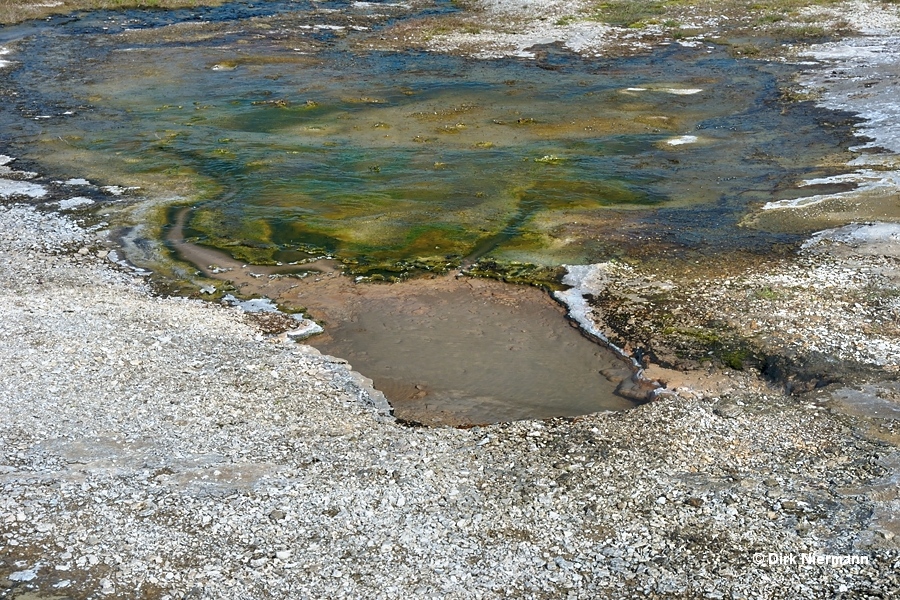
West of H210u the small, but almost constantly active geyser H210t sends out tiny splashes through a small vent.
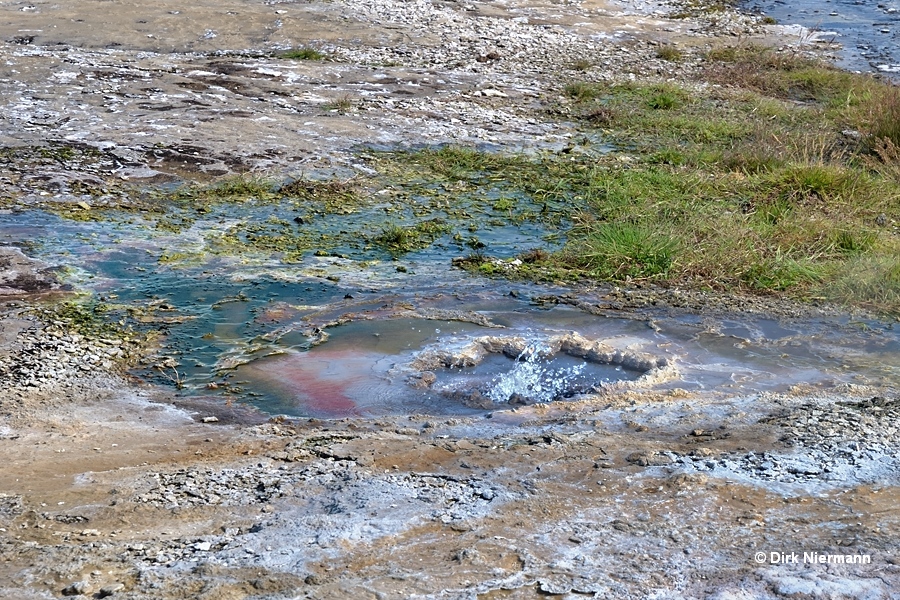
In contrast H210rqs, consisting of three medium sized vents, shows the forceful activity of a perpetual spouter. However, it is said to act as a small geyser occasionally.
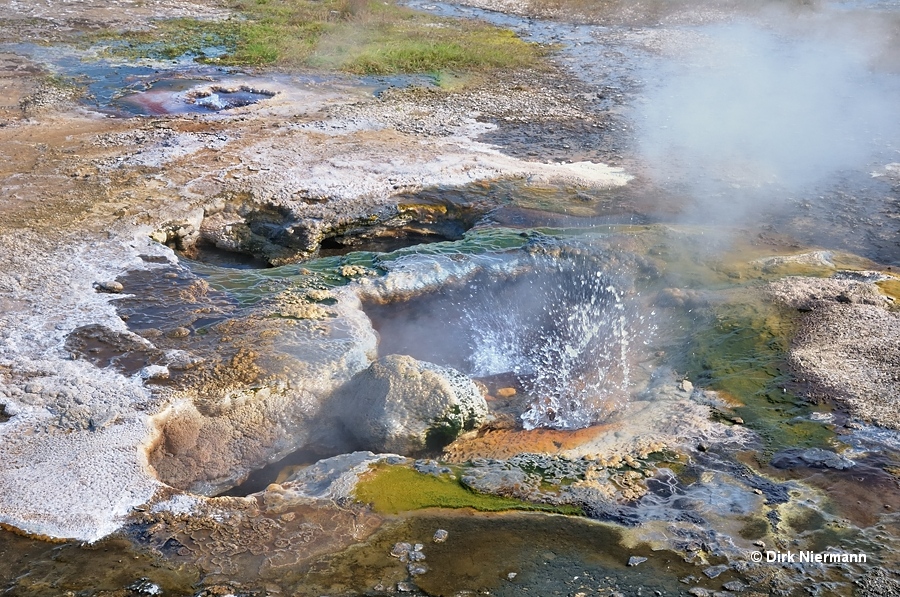
On the sinter shield at some distance to the trail, approximately 25 m (75 feet) south beyond H210rqs, a busy spouter erupts up to 1 m (3 feet) high from a medium-sized, deep-seated crater. From viewpoints of the trails it is hard to judge if its activity is really intermittent or perpetual with different heights. However, taller water jets can be spotted only occasionally, so I assume it is a periodical spouting. This feature is probably the geyser Helgi Torfason and other authors refer to as Nýi Strokkur (new Strokkur, H210a), since the position matches exactly the map of Torfason. The extinct geyser Gamli Strokkur (old Strokkur) was located 10 m west of Nýi Strokkur, but nowadays its bowl is no longer detectable. It was said to play up to 45 m (150 feet) in the 19th century. The first picture below was taken from the boardwalk, the second picture from a path south of the sinter shield.
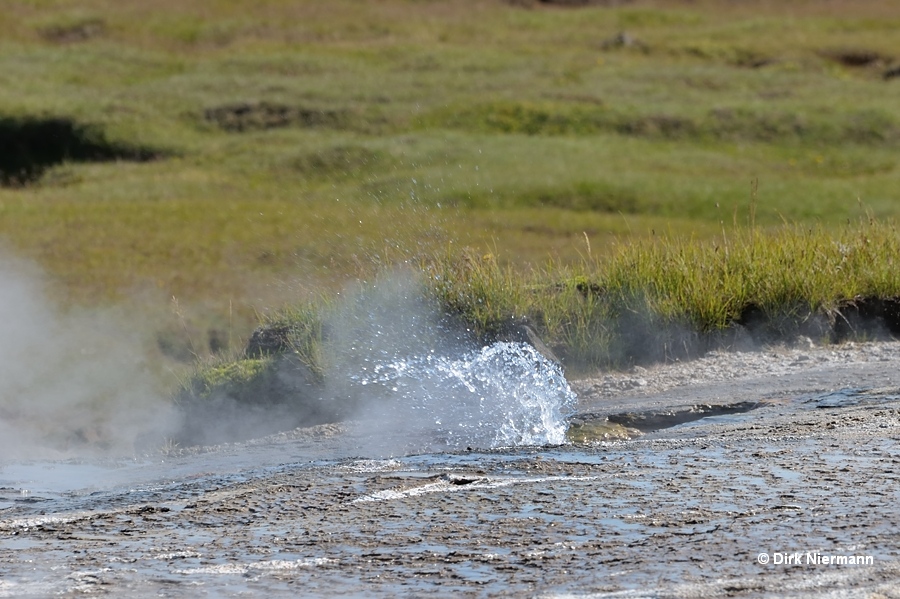
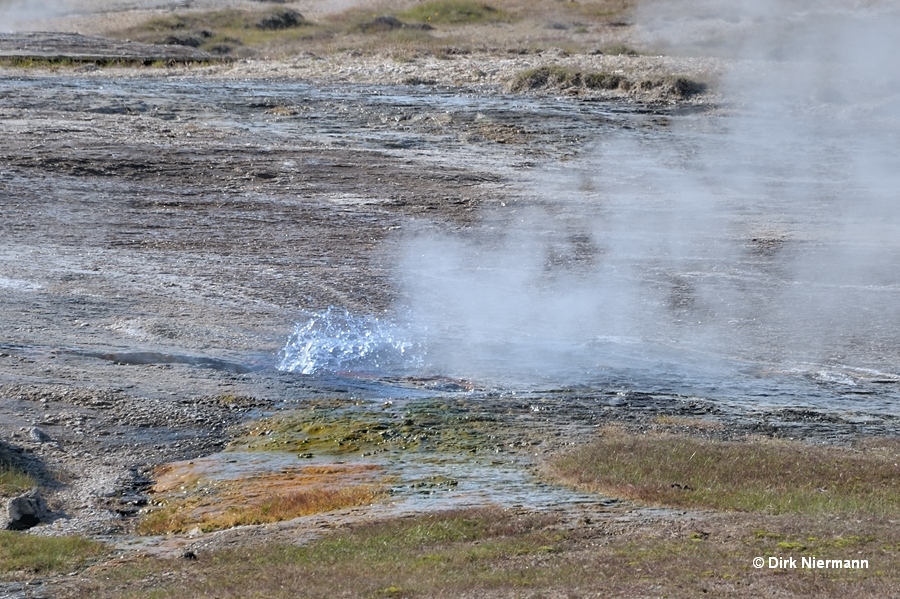
On the right (northern) side of the boardwalk there are two interesting springs at a somewhat larger distance. One of them, H203e, is a perpetual spouter and accessible by its own branch of the boardwalk. Remarkably, this spring is located in the runoff creek of another spring, H203j.
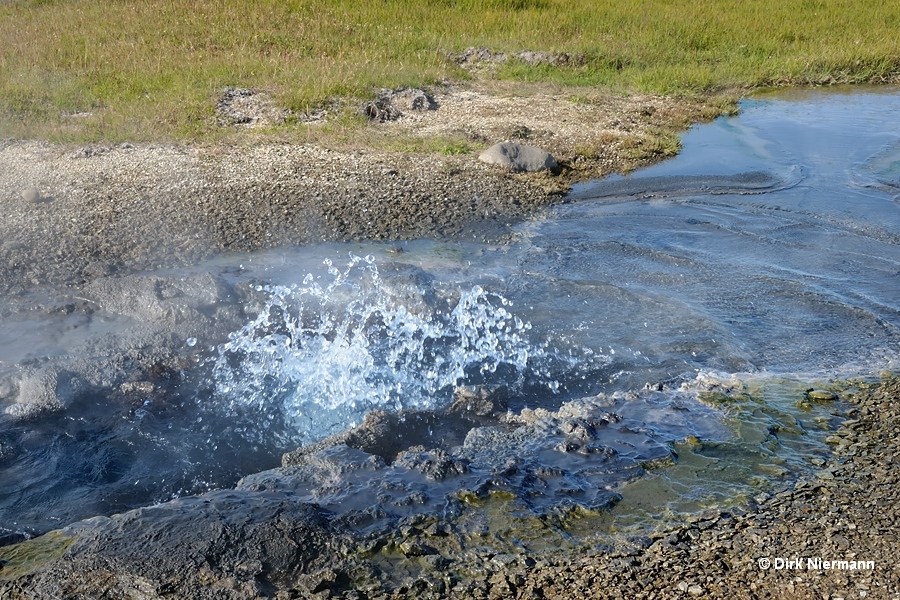
Spring H203j is an intermittently spouting spring with comparably low acitivity.
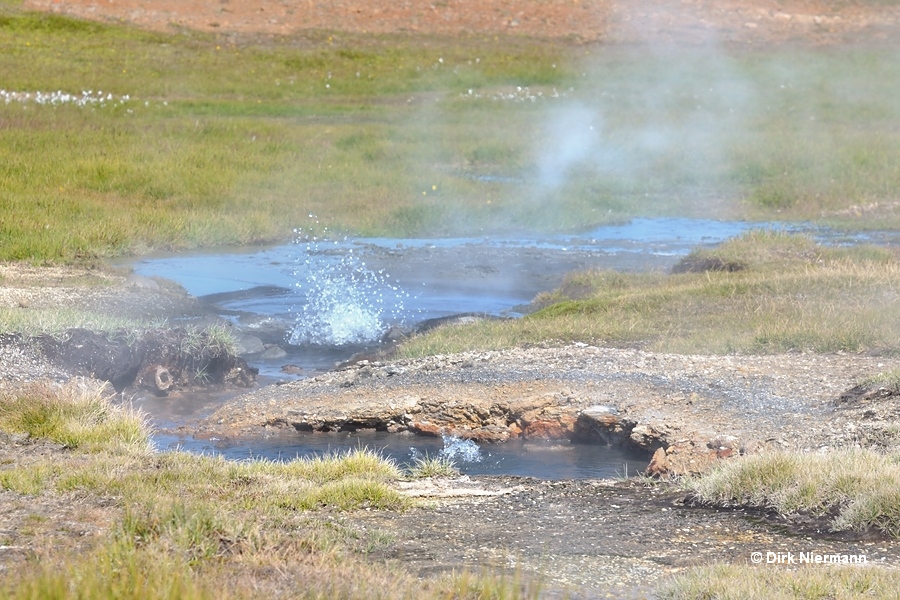
Up until some years ago the branch of the wooden trail, which leads to the perpetual spouter H203e today, was directed to a different hot spring at a short distance north of Fagrihver. Rerouting had been necessary because that spring ran dry around 2009 and left only a small dark circle on the bare ground, as shown in the second picture below. Unfortunately, this destiny met Meyjarauga (maidens eye), a small geyser and one of the most beautiful springs of Hveravellir. It was a symmetrical, bright yellow, sometimes also red hued, flat sinter funnel with the deep pipe in center, playing only up to some decimeters (one foot) high. The disappearance of Meyjarauga was foreseeable, since the spring reduced its diameter step by step from 2,5 - 3 m (8 - 10 feet) in 1991 via 1 m (3 feet) in 1996 through to 0,6 m (2 feet) in 2007.
In the past the name Meyjarauga obviously had been used for different springs. Johs. Humlum und S. L. Tuxen mentioned in their publication Die heissen Quellen auf Hveravellir in Island, Geografisk Tidsskrift Vol 38 (Copenhagen), 1935 that local people used it for Grænihver. However, on the map of Helgi Torfason (1997) and the one of Arnór Karlsson (2001) the name is assigned to the described small geyser north of Fagrihver. Helgi Torfason also mentioned the name Dúandi (dual breath) for this spring because of its "dual-mode" activity. One mode was a gentle, intermittent spouting, while the other one appeared as an emission of concentric waves propagating from the vent in center to the periphery of the funnel.
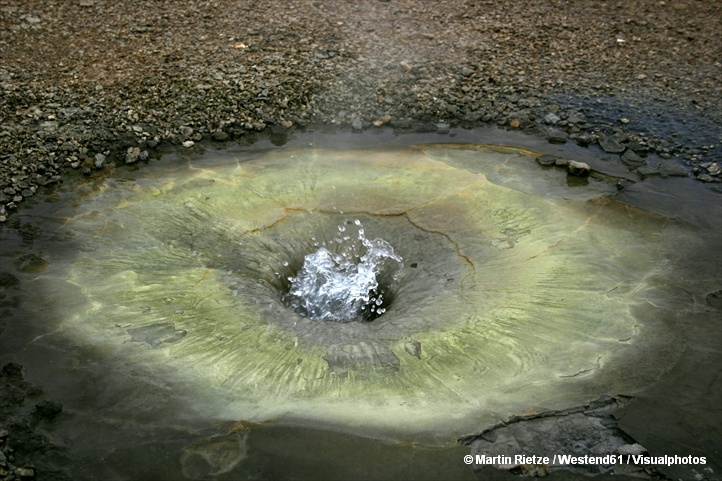
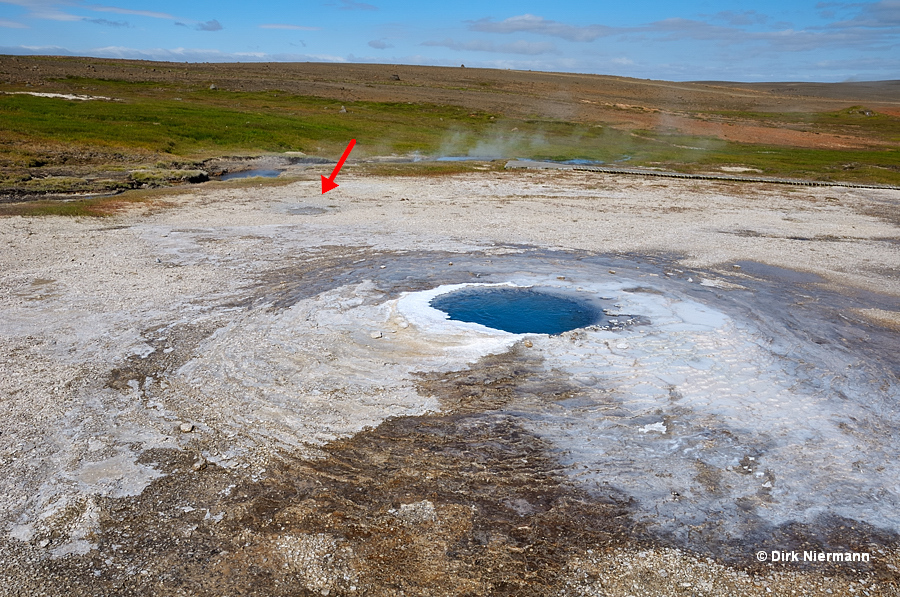
Fagrihver (lovely hot spring) may be even more eye-catching than Meyjarauga ever was. Today it is a quiet, constantly overflowing spring and merely the hot water's current rippels the surface. Especially worth mentioning is the symmetrical cone of delicately stepped sinter layers, enclosing an extraordinarily deep-reaching bowl with cornflower-blue colored water. During the last years a thin sinter ledge grows from the rim towards the center and covers the formerly circular opening of Fagrihvers bowl more and more. Somewhen in the mid-20th century the name Fagrihver was transferred from the spring currently known as Gamli Fagrihver to the present namebearer, which had been called Djúpihver (deep hot spring) before. It came into life after 1888, whereas Gamli Fagrihver is much older.
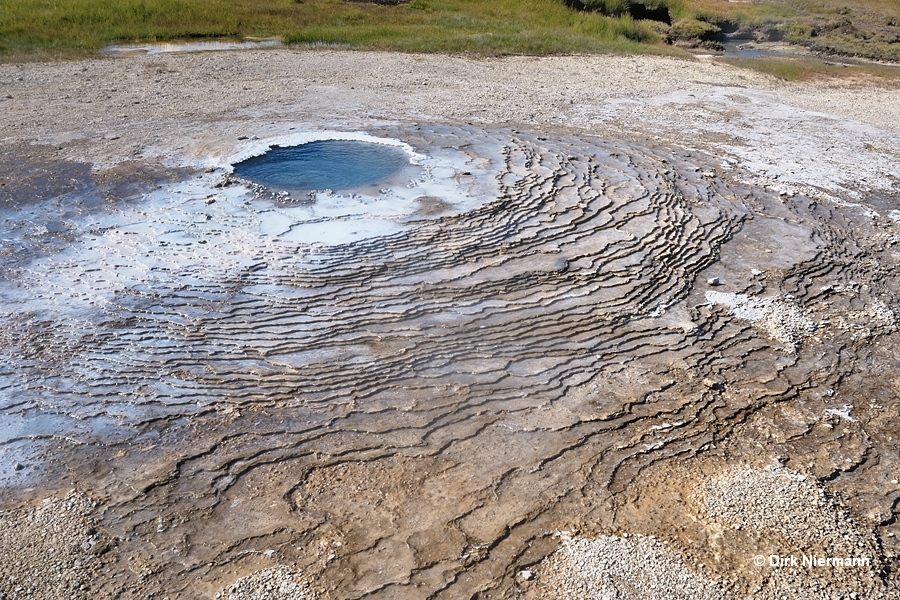
West of Fagrihver a cluster of quiet small springs, clear and muddy ones, brings up the rear of the Fagrihver Group.
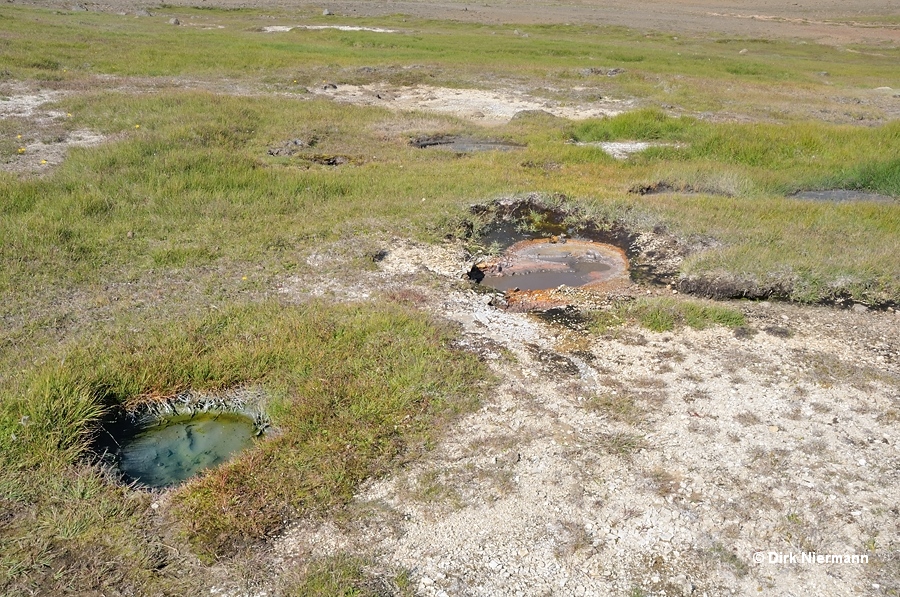
The photo of Meyjarauga is © Martin Rietze / Westend61 / Visualphotos.